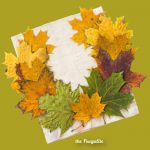(Psst: The FTC wants me to remind you that this website contains affiliate links. That means if you make a purchase from a link you click on, I might receive a small commission. This does not increase the price you’ll pay for that item nor does it decrease the awesomeness of the item. ~ Daisy)
All Frugalites know how great it feels to get a good deal on something. It might be on sale or a great thrift shop find. However, in this article, I’m going to share another way to save cash: buy something once and then use it twice! With many of these items, I use them twice…and then again and again. I hope you will enjoy these tips and benefit from them in years to come.
Old clothing and towels become rags.
My favorite towel has a rip in it. The towel is over six years old. I’m not quite ready to send it to the rag pile yet, but I know it’s on its way there. My rag pile has a lot of variety: retired dishcloths, cut-up t-shirts, old towels, socks, and much more!
In fact, what I think of as my favorite rag is a very old white towel with a wild rip in it and many rust stains. Whenever I use my foot-operated off-grid laundry machine, that old rag towel is right there to mop up the inevitable water on the bathroom floor. Once anything cloth in my household has worn out its original use, then it is ready to join my rag menagerie. There, it is likely to live out its life for many good years yet!
Food and water containers are reused many ways.
I recently went to visit one of my Aunts and gave her an empty gift. I brought her my empty Epsom salts container. It is a large clear plastic jug with a wide opening on top and a big handle on the side of it. It has a screw-top lid, too. She was absolutely delighted!
Why was she so happy to receive this container with nothing in it? She loves to fill these jugs with birdseed and shake the seed out under some of her trees in the yard. One of my other cousins was also visiting at the time. He proudly told us he fills those same jugs with road salt and shakes them on the ice on his walkway. My goodness, aren’t we a thrifty family?
Every spring, I use a collection of water jugs I have bought over the years. They don’t hold water anymore, though…because I have cut the bottoms off of them. What do I use them for in that condition, you might be wondering? They have become my treasured seedling protectors that save my seedlings from the voles in my garden.
Recyclables start my fires.
Some people just recycle their recyclables, and that’s fine if they don’t have any other use for them. Certainly, in the winter, much of my paper and cardboard recyclables are put to another use: starting my fires in my tiny woodstove.
I split my hardwood into small pieces to use for kindling. I also split softwood lumber scraps left over from my cabin build: they really help my fires get started! So, what comes into the cabin as food packaging or newspapers ends up being a fire starter…and then becomes ashes! (see below)
Wood stove ashes make ice safe and make lye.
I need to clean out my little woodstove every couple of days during the middle of winter. What to do with all those wood ashes? My favorite use is to make my walkway and driveway safe for visitors. Using an old soup can (ha ha, another reuse of recyclables!) I sprinkle the ashes on my icy driveway. I have another favorite use for ashes, too, though: soap making!
Using another cousin’s wood fire ashes from over a few years, I built a lye-making barrel. I used an aluminum garbage can and drilled some holes in the bottom. With layers in the bottom of gravel and straw, I then packed the barrel full of ashes. Pour water in the top and wait for it to percolate through. The barrel sits on a base of cinder blocks so the lye can drip into an enameled pot. If a potato floats in the lye, it is strong enough to make soap with it. So far, all my lye has been great!
These are only two of so many uses of ashes: check out this great Frugalite article to learn more!
Cooking water then waters my plants.
While building my eco-cabin, I lived off-grid without running water for five years. For three of those years, I did not have any water onsite or access to my well. I had to save up for my hand pump. So, I carried every drop of water I used from my Aunt’s home to my car, drove it several kilometers, and then carried it into my tiny home.
What did I learn from doing this? Water is a precious resource…and it can also be reused. While water is “cheap” for many readers today, it may not be so forever. I think it’s strategic to learn how to conserve and reuse water before it’s in short supply. I hope this won’t happen to you, but wouldn’t you prefer to be prepared? So, while you may not save a lot of money today conserving water, it could be very helpful to you one day if you develop some creative habits now.
Some of my own creative habits regarding water include saving any cooking water from steaming my veggies. Once it cools, I either pour it directly on my plants or into my little indoor watering can. Some people might even like to drink this water, as it has a lot of vitamins in it. Do you need to scrub your potatoes? Rather than running the tap down the drain, why not run it into a pot where you can save that water? Raising your awareness of your water use and brainstorming some strategies to conserve it could be valuable to you someday.
Construction scraps built my firewood holder.
After I bought my woodstove, I really wanted to buy a fancy matching firewood holder. The ones I liked were made of black cast iron. They were outrageously expensive at the woodstove store. I needed something right away, so I just built a simple holder out of scrap wood from the eco-cabin construction.
My initial design wasn’t strong enough, but a couple of cross beams on the back did the trick. The cost? Free. For many people, these cut-offs and odds and ends would have gone into their burn pile. Funny, it’s kind of grown on me now. I don’t think I’ll ever replace it!
Want to save cash? Think twice!
There are many ways to reuse items that we might usually overlook. Could you see yourself trying any of the thrifty tips offered here? Do you have one of your own “use twice” tips that you can share with us? Please tell us in the comments below.
About Colette
Colette is passionate about sharing her knowledge of thrifty living and self-sufficiency. She has developed her skills in self-reliance living in the suburbs, the city, and more recently, on her own Half-Acre Homestead. Colette lived five years completely off-grid and without running water in an eight by 24 foot tiny home while designing and building her own 18 by 24-foot eco-cabin. She has just launched her website, Half Acre Homestead. Colette invites you to stop by and visit this work in progress! Coming soon in 2022 is her exciting new online program. Interested in Resiliency, Preventative Health, and Self-Sufficient/Off-Grid Housing (to name a few!)? Stay tuned for more details!












28 thoughts on “Single Use Items That I Use Twice to Save Money”
We do use wood scraps and sticks of which we have an endless supply. Makes yard clean-up a bit more fun when gathering sticks for kindling or the burn pit. We don’t burn cardboard or paper in the wood stove. Rarely use cardboard in the outside burn pile either (technically, we can’t burn card board outside but that law is enforced depending on who said burner is truth be told). Most cardboard has inks/dyes and do what we can to avoid any creosote build-up between annual chimney sweeps.
Hi Selena, Thanks for emphasizing the importance of protecting our chimneys! I wasn’t aware that some locales don’t allow burning cardboard outside: very interesting. Much appreciated!
I have a fiend who buys the yogurt that comes in cute, glass containers. She repurposes them as candle holders. Widemouth glass jars are used in our house to hold fresh produce. It last weeks if you store lettuce, berries, etc in them. Of course, they are refrigerated.
Hi Karen, Oh, how interesting! I had not thought about the potential of using glass to protect produce from the dryness of a fridge. Very clever. Thanks so much!
I grew up on a farm where (like most in that area) had a junk pile that was often raided for pieces and parts for projects that arose even as long as many years later. Tin cans were often raw materials for countless gadgets, storage containers and whatnot. Discarded wooden boxes (like orange crates, eg.) became raw materials for similar concepts. Burned out motors were sources of salvaged copper wire for whatever. The variety of discarded, obsolete or broken items almost endlessly validated the old but classic expression from the 1930s Great Depression of “Use it up, wear it out, make it do or do without.”
Such experience provided the perspective that a manufacturer’s marketed purpose for whatever was originally sold was often just the beginning of a multitude of uses for either the complete item or whatever pieces were left after the original purpose had been served. Sometimes a little bit of improvisation could even improve on the maker’s original intentions.
Today there are even more possibilities given new items, tools and technical knowledge. Only in recent years have the side-cutting (marketed as “safe cutting”) tin can openers become available … and they open up a whole new world of uses for saved tin cans now with smooth edged reusable lids along with smooth edged open ends of cans.
As the knowledge of solar cooking has become more widespread … many non-obvious discarded items find new uses here. For example: discarded rear projection TVs often have their giant Fresnel lens saved to become the key piece of a solar cooker, boiler, distiller or even a metals melter — depending on the style of focus (spot or area) and whether the lens has been manufactured to resist UV damage from the sun. Discarded car tires become the frame for a small solar box cooker, eg. One DIY design using scrap cardboard (or discarded coroplast political campaign yard signs) and aluminum foil (called a Copenhagen design) can create a highly portable solar panel cooker for which the how-to information is demoed on YouTube.
The uses of wood ash discussion has some fascinating history. I listened to a naturopathic medic recently on late night radio describe how in the pre-electric era when most people still used wood stoves (that created a lot of wood ash) that some of that ash made its way into the foods being cooked. The non-obvious benefit in that era was some useful medical effects for people. As cities became electrified and the wood stove based cooking was replaced, various health problems (that the wood ash had previously suppressed) arose without the cause being obvious. That radio discussion didn’t go into specifics about the types of ailments involved or if specific wood types were more helpful than others for the health benefits of their wood ash. This is worth doing some more research.
–Lewis
Hi Lewis, Thanks so much! You had me taking a walk down memory lane….back into the scrap metal junk pile on my grandfather’s farm. It was a treasure trove of fascinating items. I used to spend hours just walking and crawling around in it, finding cogs and many items on the ground. My grandfather was a dairy farmer and a talented fabricator of anything needed on the farm, whether made of metal, wood or leather. He was a modest, quiet man. I so enjoyed being in the barn while he milked when I was a child. Even today, when I see a scrap metal pile on a farm, I have an overwhelming urge to investigate it!
The origin of my own lye making barrel was my mother’s story that her mother, my grandmother, had made lye by pouring water through a conical sieve filled with her own woodstove ashes. I am quite interested in doing some research into the health benefits of wood ash. Let’s keep each other posted. Thank you again for another enjoyable and informative post!
You also don’t want to burn pallets and contaminated wood if you are going to eat it or add to your compost/garden
Hi Buttercup, Thank you for raising a very important point. I have heard stories from a friend who does a lot of woodworking about people having severe reactions to wood in pallets when they tried to work with it. We can’t be sure what’s in there. Similarly pressure treated or contaminated wood could be toxic if you plan on eating or composting it. I read my woodstove manual thoroughly and it is clear about the dangers of using your woodstove as a garbage incinerator. Selena was also right to point out earlier that even coloured cardboard is good to avoid. Thank you so much for taking the time to protect the health of readers. Much appreciated!
There was a time when we literally had to pinch every penny until it screamed. One of the many things I did to “re-use” was dryer lint. One Christmas I made several dolls out of fabric scraps and stuffed them with dryer lint. My nieces were thrilled. (They were very young at the time.) I don’t do that anymore, but I still “re-use” a lot of things.
My wife has been making pin cushions out of tuna cans filled with dryer lint for 50+ years.
(Probably longer. We’ve only been married 53 years)
I am still reminded to save it every wash day.
I love this idea! Reusing the can, the dryer lint, and some scrap fabric, I assume. Does she use elastic to hold the fabric onto the can? I might make one for my aunt who loves to quilt and sew. Congratulations on 53 years of marriage. That is truly amazing!
Hi Nancy Drew, What a lovely story of the dolls you made for your nieces. It just goes to show that some caring and love put into a gift like that (and some dryer lint!) goes a long way. Thank you for sharing that.
I reuse several recyclables. Individual yogurt cups become seedling pots, quart yogurt or cottage cheese containers with lids hold leftovers or smaller quantities of animal supplements or can be turned upside down to cover small plants when late season frosts show up. I also cut the bottoms out of the quart containers, slide the cylinder over young seedlings both as wind protection & very effective pest prevention.
One of my favorite recycling projects is to use the large plastic clamshell containers like those that grapes or bulk spinach are packaged in as a mini greenhouse to start seeds in for our house yard container gardens. I can fit 4- 6 tiny pots inside each clamshell, so each vegetable has it’s own greenhouse until they are ready to be transplanted into their garden area.
It’s fun to think outside the box & figure out what else something can be used for!
Hi Angelcrest, WOW! You had me exclaiming “What a great idea!!!” when I read your clamshell idea. That is absolutely FANTASTIC! I actually have a bulk spinach container in my fridge right now that my cousin gave me…I am so excited to try it out in its new incarnation. I definitely agree that it’s fun to think outside the box. Thank you for thinking outside the clamshell for all of us…I’m sure many of our readers will enjoy your tip!
I have found that 2 liter soda bottles are excellent for storing items like rice, etc. I put an oxygen absorber in the bottle, and store in a dark pantry. I can always acquire soda bottles. They are also useful for used cooking oils after they cool, and can be disposed of with no mess. Diabetics on insulin can use them as a “sharps” container to dispose of used insulin needles in the trash.
Drip type coffee filters can be rinsed and allowed to dry up to four times, making five used from 1 filter.
My DH’s mother would buy wool sweaters from the charity shop for very little, unravel the yarn, and knit new items.
Used dish water used to be carried out and poured on the vegetable garden, and used laundry water’s final use was for mopping the floors.
Soured milk fed the chickens, stale bread was completely dried and used for bread crumbs or cut into cubes and saved for stuffing.
Paper towel tubes work well for slipping over tong handles, which keeps the tongs closed and they take up less room in a drawer.
Ashes are mildly abrasive and are useful for scouring, and chickens enjoy dust bathing in them, which helps with lice issues.
Old pill bottles are great for storing small seeds for next year’s garden or flower bed.
The wax stubs of candles are good for lubricating sticking drawer runners, and we also melt them down to mix with sawdust which is placed into cardboard egg cartons, making 12 firestarters for the woodburning stove.
Remnants of soap bars can also be used on drawer runners, and I used to keep the sharp end of diaper pins in a bar of soap so they glided through cloth diapers with ease. Plastic containers like yogurt cups etc are good for starting seedlings and can be used over and over until they break.
I enjoy your posts, they are interesting and informative!
Hi Debs, Thanks so much! I loved your post and found several ideas I could try myself. I wish we had kept the diaper pins in a bar of soap when I was young…I used to change my younger brother’s diaper, and I can remember how hard it was to get that darn pin through all those layers of cotton! I have some extra wood ashes in my metal bucket….I am going to save them for my friend who has chickens. I think he will be delighted! Thank you for all of your wonderful ideas. A true Frugalite list of ways to use and re-use!
Paper plates. So many uses! Save water by not washing. Put name of person on the plate and if dry and not “sauced” (dirty) can use for next meal. Don’t get waxed type and you can tear into fire starting strips. Staple onto stick to mark garden plants. Use to move hot skillets. Cover for grease spatter (which can make really good fire starters). Use to do first clean of cast iron cookware. Pin to string to provide a little shade and wind movement keeps flies, midges away. Put essential oils on and pin up for bug relief in stalls, coops, pet areas and can pin to house screens. Good cover for bedding plants as no plastic and won’t have as much moisture buildup to cause mold. Can make new paper out of shredded pieces (not food stained). Can buy at bulk stores for very cheap and last forever!
Hi Leslie, Thank you for your creative list of ways to use and re-use paper plates. It made me want to go out and get some. Many thanks!
Yes, paper plates here are for people first, then designated for pets, then if necessary for outdoor fire etc. Paper towels if used to dry wet clean hands are allowed to dry and reused for pet clean ups, or wiping up messes
Hi Maria, Great tips on the use of paper plates with lots of steps on where they go next. Much appreciated!
Loved your article! Freezer Ziplock baggies are expensive so I clean them out n dry them on a baby bottle rack so they can be used many times. I save the paper towels I use when I wash my hands and reuse them to clean the counter tops and polish mirrors. Instead of using foam coffee cups once, I buy ceramic mugs at Dollar Tree and paint people’s names on them and give them away as gifts. I don’t throw away pump dispenser bottles any longer. I remove the label, print pretty vintage labels and fill them with liquid castille soap. (Grate 1 bar of Dr. Bronner’s Castille soap in a metal bowl. Pour 7 cups of boiling water over it and stir til dissolved. Fantastic and cheap!) They’re great to give as gifts.
Hi Kathleen, Thanks so much! I like to wash my ziplock baggies, too. I had never thought of a baby bottle rack….How clever! I will be certain to be using your idea of making liquid soap with a bar of Dr. Bronner’s. It’s my favourite. I would love to receive that vintage labelled bottle as a gift! Much appreciated!
One more thing…I collect used wine corks that I get from liquor stores, soak them in rubbing alcohol, store them in Mason jars and use them as fire starters. I also drill a hole in one side and glue a feather inside, attach it to a long string and my cats love to play with it. I also drop these off at the animal shelter. Lastly, I glue them inside of old glassless picture frames and use it as hot plates.
Hi Kathleen, So glad you shared these wine cork ideas. I am going to have to try the fire started idea. That is cool. I can just imagine how the cats love that fun toy. That is kind of you to make some for the cats in the shelter. I am sure that they love them, too!
I grow sprouts and always use the soak and rinse water for cooking – Fenugreek seeds impart a maple flavor to the water so I use that in my morning oatmeal -or plant watering.
When ever we get a cardboard box it’s flattened and saved for weed suppression in the yard, topped with shredded clippings from the yard.
I use the ziplock bags that lots of food items come in these days for food storage, discarded cooking oil to be put in the garbage, freezer storage of bones for soup making.
I also repair rips/tears in anything I can either by sewing, gluing or taping depending on the final use. Towels are easy to repair and of course can be cut down to smaller size and zigzagged on the edges. If clothing is no longer able to be repaired I remove buttons, hooks & eyes, zippers to use on other items.
Hi Bellen, Thank you for taking the time to share your creative re-uses. I was not aware about the water from sprouting Fenugreek seeds. That sounds absolutely delicious! You are quite handy in terms of sewing. I am sure that this allows you to extend the life of many items of clothing in your household. Good for you!
Having had a lot of experience with cloth diapers. If using diaper pins, run the pin through yor hair near your scalp and the will slide through the cloth easily. Might be a useful tip in the future??
Hi Sis, That is soooo cool. and TOTALLY FREE! What a great tip. Thank you for sharing this with the Frugalite community. A tip of my Frugalite hat to you!